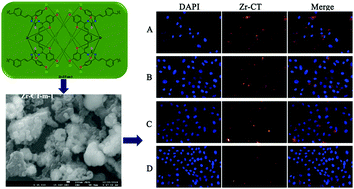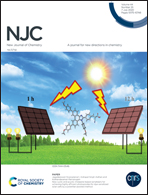Zirconium doping level modulation combined with chalconylthiourea organic frameworks induced enhancement of luminescence applied to cell imaging†
Abstract
Through a clever synthetic route design using chalconylthiourea as an organic ligand and a zirconium metal–organic framework structure with many hydroxyl groups as the center polymer material, a reaction under acid conditions with different ratios of sodium zirconium fluoride afforded four chalconylthiourea polymer (CT) derivatives. The different wavelength ranges of the fluorescent materials detected through the UV-PL method were ultraviolet (500–720 nm) and fluorescence emission (500–800 nm). Fluorescence XRD and SEM methods measured the zirconium doping level and its material distribution, respectively. Modulation of different doping levels was carried out and the polymers were applied to HeLa cell lines. The fluorescence behavior was observed by cell imaging, which showed that with fluctuation of the doping level, the products could all enter the cell membrane successfully and produce distinct intense fluorescence.



 Please wait while we load your content...
Please wait while we load your content...